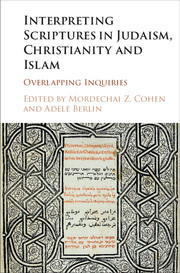Book contents
- Interpreting Scriptures in Judaism, Christianity and Islam
- Interpreting Scriptures in Judaism, Christianity and Islam
- Copyright page
- Contents
- Figures
- Notes on contributors
- Book part
- Glossary
- Introduction
- Part I Scriptural texts in changing contexts
- Part II Conceptions of the literal sense
- Part III Rhetoric and the poetics of reading
- Bibliography
- General index
- Scriptural index
- References
Bibliography
Published online by Cambridge University Press: 05 June 2016
- Interpreting Scriptures in Judaism, Christianity and Islam
- Interpreting Scriptures in Judaism, Christianity and Islam
- Copyright page
- Contents
- Figures
- Notes on contributors
- Book part
- Glossary
- Introduction
- Part I Scriptural texts in changing contexts
- Part II Conceptions of the literal sense
- Part III Rhetoric and the poetics of reading
- Bibliography
- General index
- Scriptural index
- References
- Type
- Chapter
- Information
- Interpreting Scriptures in Judaism, Christianity and IslamOverlapping Inquiries, pp. 336 - 370Publisher: Cambridge University PressPrint publication year: 2016



